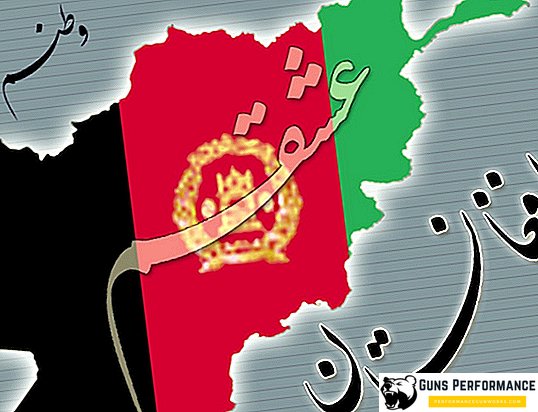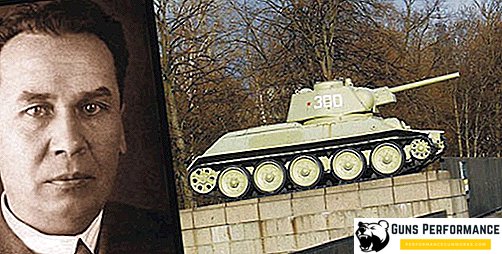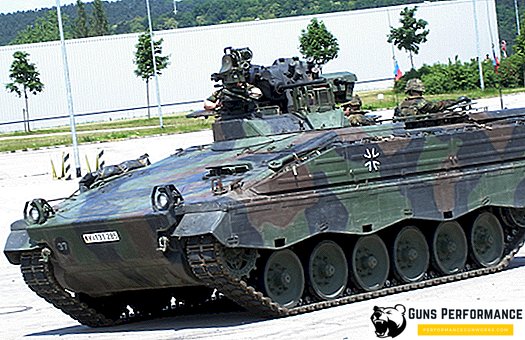There are countries on the political map of the world whose history is timeless. In such states, social and social development and political structure follow their own laws. Scientific technological progress and fashionable social and political trends are not dominant here. Life in these lands flows according to ancient tribal laws, based on a powerful religious cult and unshakable national traditions. Such state formations are like "white spots" on a modern map of the political world order. One of these countries, undoubtedly, is Afghanistan, which is the tight knot of world politics, which is the epicenter of religious and social contradictions. Afghanistan acquired the status of a state with all the necessary attributes and symbols only in the 20th century, when the interests of two political heavyweights, Great Britain and Russia, crossed at this point on the globe.

Early statehood in the lands of Afghanistan
The unstable political situation on these lands and the backward economic situation of the region are due to the unique geographical position of Afghanistan. Since ancient times, the interests of different cultures and religions overlapped here. The rulers of the East sought to conquer the peoples of this mountainous country, gaining control over the trade routes from China to Asia. The first shoots of civilization on the lands of Afghanistan are associated with the expansion of the sphere of influence of the Parthian kingdom, which in the I century reached the peak of its power.
Despite Persian rule, the tribal nobility of a mountainous country sought to pursue its independent policy. In view of the considerable remoteness from the central regions of the vast Parthian Empire, the Kushans established themselves in the territory of mountainous Afghanistan. In place of the ancient cults came Eastern beliefs, among which Buddhism dominated.

In this part of Central Asia, Buddhism has received the widest possible distribution. Unique religious buildings were created - the world famous Buddha statues in Bamiyan. Today their age is estimated at 1500 years. The tribes living in the mountain valleys of the Hindu Kush spoke a language similar in sound and vocabulary to the Indian language group Devanagari.
The ruling political elite of the Parthian kingdom tried to subdue the obstinate Afghan tribes, but this was only possible for the Huns. The barbarians' army of fire moved across Central Asia, changing the borders of kingdoms and empires, destroying established social and political ties. After the departure of the Huns to the West, the lands of Afghanistan pass under the control of the new owners. The territory of Afghanistan becomes the center of the state of Ephtalits. The subsequent rule of the Turkic Kaganate did not interfere with the Ephtalits and Kushans to create the first independent state of Kabulistan (the present territory of the metropolitan province of Kabul).

The first state education in Afghanistan existed for a relatively short time. In the 6th-7th centuries Islam came to these lands, which became the main religion of the Saffarid dynasty, which managed to unite the local tribes under its influence. Supporters of Buddhism and Hinduism go to the highlands, and Islam is spread throughout most of the country. Since the eighth century, Afghanistan has been considered the eastern frontier province of the Arab Caliphate. Finally, the country becomes part of the Islamic world in the 10th century, when the new ruling Samanid dynasty was established in the country.

From the 12th century, for the first time in Afghanistan, the influence of local nobility, which took shape in the ruling dynasty of the Ghurids, increased. The laws and orders of local rulers rely on the text of the Quran, becoming the first sources of tribal law in force in this vast territory.
However, the formation of its own statehood was once again prevented by a foreign invasion. During their rule, the Mongols created two ulus on the territory of Afghanistan, which already in the XIV century became part of the Empire of Tamerlane. Timur’s descendant Babur becomes the first sole ruler of the province of Kabul who founded the Mughal Empire on the vast lands of Central Asia.

Afghanistan in the era of socio-political upheaval
Over the next three centuries, the territory of present-day Afghanistan was torn apart by powerful neighbors, whose confrontation resulted in the formation of the first Afghan principalities at the end of the 18th century, Kandahar and Herat, which can be considered the prototype of the modern Afghan state.

In Kandahar, the dynastic Pashtun branch of the Hotaki tribe, headed by Mir Weiss, was established in power. From this moment begins the difficult and thorny way for the Afghan tribes to gain independence from foreign rulers and usurpers. After the fall of the political regime of Nadir Shah in Persia, the Afghan principalities left the sphere of influence of the Persian Empire. Since the middle of the XVIII century, power in the country is concentrated in the hands of Ahmad Shah Durrani. His efforts succeeded in uniting most of the Afghan tribes around the Pashtuns. The trips of Ahmad Shah Durrani to neighboring lands, to Iran and India, to Punjab and to Kashmir, allowed the country to significantly expand its territory. Around the Herat, Kandahar and Kabul principalities begins the unification of the country. The new Empire, called Durrani, existed for 76 years. This period can be called in the history of Afghanistan a period of highest power and prosperity.

In this state, the first Afghan united state could not exist for a long time. There was no political and state culture in the country, and all supreme power rested on the personal authority of Ahmad Shah Durrani, on the Koran and on age-old tribal traditions. As soon as the founder of the empire fell in peace, the state disintegrated into four small principalities with centers in Peshawar, Kabul, Kandahar and Herat. Once in a fragmented state, the Afghan state could not withstand the growing power of Western imperialism. Great Britain, which managed to subjugate India, sought to restrain the growing ambitions of the Russian Empire in this region. With the collapse of the Durrani Empire, Afghanistan for many years turned into an arena of brutal bloody wars that had to be fought by Afghan tribes with British troops.
The result of the three Anglo-Afghan wars was the protectorate of Great Britain, decorated in 1879. When Emir Abdur-Rahman finally formed the current state borders, and all the real power in the country is under the control of the British military administration. The emirate was completely controlled by British troops, and all the supreme power of the emir was concentrated in the largest cities of the country, including Kabul and Herat.
Afghanistan in the 20th century: first steps towards independence
The emir of Afghanistan, Habibullah, in which the country entered the twentieth century, tried to become a secular ruler. He had the education, allowing him to introduce in the system of government new forms of government, locally based on the leaders of the tribes. Despite the fact that reforms were limited, the goals and objectives of the last emir of Afghanistan were ambitious. In 1905, Habibulla signed an agreement with the British military administration, according to which the country completely loses its own foreign policy. In exchange for loyalty to British influence, the emir receives generous financial assistance from Britain, which for those standards was a huge amount - £ 160,000. In such circumstances, the British protectorate over Afghanistan becomes the mainstream of the entire Central Asian policy of the British Crown.

The epoch of Khabibullah Khan’s rule in the history of Afghanistan was marked by serious and large-scale civilizational transformations. For the first time in the country there is a telephone connection. The capital of the state of Kabul is now connected by telephone lines to large administrative centers. In 1913, the first specialized hospital was opened in Afghanistan.
Under the influence of the British cabinet, Afghanistan remained neutral during the First World War, although the influence of the German and Turkish espionage missions in this country at that time was quite serious. This was facilitated by the rapprochement of the young Afghan elite with the "Young Turks", who were able to expand their influence throughout Central Asia. Despite strong pressure from the Ottoman Empire, Afghanistan continued to remain an island of calm in this turbulent time.
Khabibullah Khan was killed during a hunt in early February 1919. Literally a month later, his son Amanullah, who ascended the throne, independently proclaimed Afghanistan an independent state from the British Empire, which led to the beginning of the next Anglo-Afghan war. After unsuccessful military actions, the British in 1921 were forced to recognize the independence of Afghanistan.
In 1923, the light saw the first Constitution of Afghanistan, in which, along with the privileged position of the ruling political regime, emphasis was placed on strengthening the principles of representative power of all the tribes inhabiting this mountainous region. Free market relations are beginning to operate in the country, land and tax reform are starting. In the largest cities of the country there are schools, lyceums and higher educational institutions. In 1929, the Emirate was abolished, turning Afghanistan into a kingdom that would last 44 years, until 1973.

During this period, the following persons were the kings of the Kingdom of Afghanistan:
- Amanullah Khan, years of government 1919-1929;
- Inayatulla-Khan - temporary worker, who was in power for three days from January 14 to January 17, 1929;
- Habibbul Kallakan, who seized power in the country in January 1929, became a usurper;
- Mohammed Nadir Shah, who returned to the royal throne in October 1929. He was in power for four years until November 1933;
- Muhammad Zahir Shah, who took the throne in 1933 and remained in this post until July 1973.
In the prewar period, Kabul emerges from political isolation. In 1931, Afghanistan and the Soviet Union concluded an agreement on neutrality and good neighborliness. The Kingdom is building strong relationships with the UK and the United States.
King Zahir-Shah managed to keep the country from entering World War II, preaching a policy of unaligned neutrality. At this time, Mohammed Daoud appears on the political Olympus of Afghanistan, who occupied the post of the last king as prime minister. This man, the future president of Afghanistan, will be the initiator of the 1973 coup d'état that destroyed the monarchy.

Afghanistan in the era of the republic
Despite the fact that the last Afghan king, Zahir Shah, tried his best to make a secular state out of a backward country, his reforms did not receive a wide response among the leaders of the Pashtuns and Tajiks who made up the main folk-tribal groups of Afghanistan. Serious resistance to civilization development was the clergy of the country, in which the first roles were played by representatives of radical Islamist movements. The new Constitution of 1964 was supposed to snatch Afghanistan from the captivity of the Middle Ages. Among his achievements are the following: the electoral rights of women, freedom of the press, the nationalization of higher educational institutions and the imparting of language to Pasht as a state.

The years of King Zahir Shah’s reign are considered the “golden age” in the history of the Afghan state. The state received its parliament, and the royal family was restricted in their rights to occupy leading positions in the government of the country. However, along with this, the efforts and steps of the king along the path of democratization contributed to the strengthening of political influence in the country of the Prime Minister, who managed to concentrate all the reins of government in his hands.
Many of these factors have led to the overthrow of royal power. In 1973, King’s brother-in-law and his cousin, Mohammed Daoud, who served as prime minister, became the head of the conspirators. The result of the coup was the abolition of the monarchy and the proclamation of the Republic of Afghanistan. Since then, the country has embarked on a dangerous path of political instability and economic decline, stretching for as long as 30 years.

Mohammed Daoud, who until this moment controlled all the executive power in his hands, headed the Central Committee of the Republic of Afghanistan - the first revolutionary transitional government. Daoud actually became the sole head of state, at the same time occupying the post of prime minister, minister of defense and minister of foreign affairs of the Republic of Afghanistan. In 1977, a new Basic Law was adopted, in accordance with which the presidency was introduced in the country.
The President of Afghanistan became the sole head of state, in whose hands was the entire executive and legislative power of the country. Presidential decrees and orders had the force of state laws. All foreign and domestic policy of the state was a continuation of the will of the head of state and the ruling party of the national revolution.
The country's first president dissolved parliament and liquidated the Supreme Court. A single-party political system was imposed in the country. The whole period of Mohammed Daoud’s rule can be marked by one expression - a sample of authoritarian power.
In this situation, the country was heading for another revolution, which broke out in April 1978. The initiators of the change of the political regime were left socialists, representing the largest radical left-wing People's Democratic Party of Afghanistan. After the overthrow of the regime of Daoud, Afghanistan becomes the Democratic Republic (DRA), which for many ten years will become a stumbling block to the political interests of the Soviet Union and the United States.

With the coming of the socialists to power, the country plunged into a lengthy military conflict, which began with the military intervention of the Soviet Union and developed over time into civilian armed confrontation. The country was headed by the following persons as the Chairman of the Afghanistan Revolutionary Council:
- Nur Mohammed Taraki, years of government 1978-1979;
- Hafizullah Amin, who led the state from September 16, 1979 to December 21, 1979;
- Babrak Karmal, who became the Head of the DRA in 1979 and held a high position until 1986;
- Haji Mohammed Chamkani replaced Babrak Karmal in 1986;
- Mohammed Najibullah, who took office in 1987.
Afghanistan under Islamists and in a new era
Under the influence of events taking place in the Soviet Union, the Afghan opposition stepped up its activities at the front and in the political arena, trying to achieve a shift in the central Kabul government. At the same time, the leadership of the PDPA and Najibullah himself tried with all their might not only to stay in power, but also made efforts to achieve peace in the country. At the end of 1987, a meeting of the leaders of the Loya Jirga tribes adopted a new constitution, in which the country received a new name - the Republic of Afghanistan. Najibullah, being the head of the PDPA and the Chairman of the Revolutionary Committee, becomes the country's second president.

The withdrawal of Soviet troops from the country in February 1989 put an end to Soviet influence in Afghanistan. The economically ruined and politically distressed Afghan state entered a period of acute civil and religious confrontation. With the end of the intervention period, the era of the Democratic Republic of Afghanistan ended. In 1992, detachments of the armed opposition, which managed to gain control over 90% of the country, entered Kabul. The political regime of Najibullah fell. However, instead of reaching agreement on the choice of the future fate of the country, the leaders of the opposition took irreconcilable positions. This did not fail to take advantage of the Islamist movement "Taliban", which is rapidly gaining strength in the south of the country. Having declared themselves defenders of Islam and all Pashtuns of Afghanistan, the Taliban quickly occupied one province after another. Organized resistance from the armed opposition groups ceased with a wave of a magic wand.

In 1996 a heavy and gloomy shroud of religious rule fell on the country. Afghanistan has become an Islamic state, where Sharia law was ruled, and all previous achievements of civilization were recognized as alien and hostile to the pure Islamic religion. Hiding in the UN Kabul mission, Najibullah was caught by the Taliban, convicted by a Sharia court and executed. For 8 years, the country was in a state of transition. The leader of the Taliban movement Burkhanuddin Rabbani led the country from 1996 to 2001.
Modern Afghanistan represents an arena of fierce fighting by the forces of the western coalition with radical Islamist movements that continue to lead the Taliban. Под давлением западных стран, которые опирались на вооруженную коалицию, движение "Талибан" было разгромлено. Новым президентом Республики Афганистан в 2004 году стал демократически избранный Хамид Карзай. Этот политический деятель занимал свой пост в течение десяти лет, сумев быть президентом страны два срока подряд, с 2004 по 2014 года.

В 2014 году в стране прошли очередные президентские выборы, на которых победил беспартийный Ашраф Гани. Очередному президенту досталась разрушенная и разоренная страна. Движение "Талибан" продолжает тревожить основные экономические центры страны, нарушать нормальную работу социально-общественной инфраструктуры посредством террористических атак.
Действующий президент Республики Афганистан является гарантом суверенитета страны, однако статус президента имеет скорее формальные полномочия, так как основное влияние на местах и в провинциях продолжают иметь представители племенной власти.












